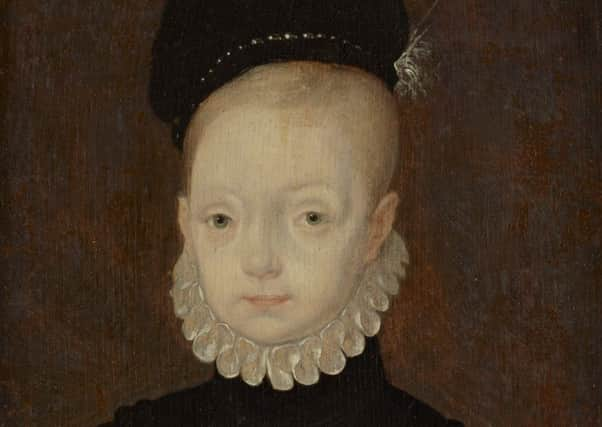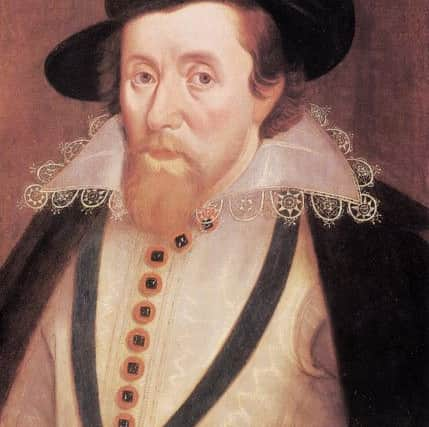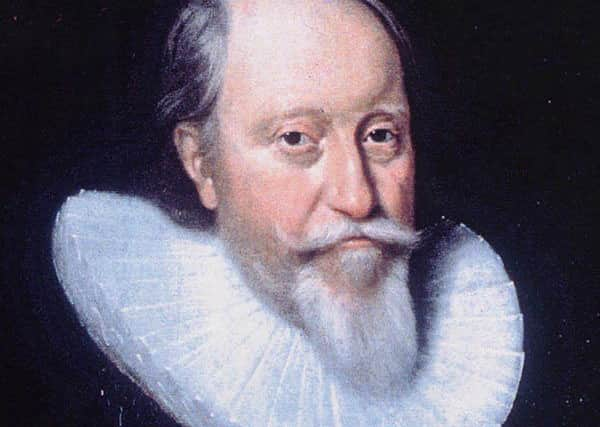The Prince and the impostor: was King James VI switched at birth?


The Royal Family are used to conspiracy theories being thrown their way - just take David Icke’s infamous and highly-ludicrous claim that the Windsors are actually shape-shifting lizards, for example...
Bizarre assertions aside, though, there is a much older Royal Family conspiracy theory which may just hold some water.
Advertisement
Hide AdAdvertisement
Hide AdHistory records that the future King James VI and I was born to Mary Queen of Scots at Edinburgh Castle on 19 June 1566.


Crowned as King of Scotland at 13 months old, and King of England and Ireland three decades later, James lived until the age of 58.
Or did he? There is an alternative version of events, backed up by some detailed accounts, which suggests otherwise.
The fire
One night in 1830 a terrible fire swept through a part of Edinburgh Castle.


Among the rooms affected were those known to have been used by Mary Queen of Scots, and when workmen arrived to repair the damage, they made a most remarkable discovery.
Concealed behind a layer of plaster, the labourers found a small coffin containing the bones of an infant. The size of the bones suggested that the child couldn’t have been more than one or two months old at the time of death.
Furthermore, the grisly remains were wrapped in a cloth embroidered with the letter I for Iacobus - the Latin variant of James.
Advertisement
Hide AdAdvertisement
Hide AdThe discovery, which was recorded in the London Observer, breathed fresh life into a rumour which had been doing the rounds for nearly 300 years: that Mary’s son, the future king of both the Scottish and English crowns, had died at birth and had been switched by an imposter.


But who?
The legitimacy of James VI of Scotland has been the subject of gossip-fuelled debate for centuries. Even in the 1500s, rumours were rife that the baby which Mary was carrying in her womb belonged to her assassinated private secretary, David Rizzio and not Henry Stuart, Lord Darnley.
Regardless of parentage, however, some have speculated that, upon suffering a premature death, James was replaced by a child of Erskine, Lord of Mar. James was brought up the Earl of Mar, which perhaps added fuel to the fire.


While it is impossible to know if the two ever shared the same blood, portrait comparisons between the adult James and the 2nd Earl of Mar do bear a likeness. If the rumours are to be taken at face value, then the pair would be siblings. Fellow Stuarts even remarked how different James was in both his physiognomy and character compared with other members of the family, and it is said that James looked absolutely nothing like his supposed parents, Mary and Henry Stuart.
When Mary was executed in 1587, the king showed zero emotion, and while it is true that James’ ambassadors were sent to plead for Mary’s life, just as important was their mission to ensure that “nothing in her sentence or execution should prejudice her son’s right to claim the throne”. In other words, he wasn’t too fussed if she died or not; as long as he got to be king.
Doubt
One person who remains utterly unconvinced by the changeling story is leading historian, Antonia Fraser.
In her best-selling biography, Mary Queen of Scots, Fraser argues that a switch just wouldn’t have been possible, and that the bones discovered in 1830 would most likely have been “the sad relic of a lady-in-waiting’s peccadillo”.
Advertisement
Hide AdAdvertisement
Hide AdSpeaking to The Scotsman in 2007, a Historic Scotland spokesman agreed: “Edinburgh Castle encompasses hundreds of years of history and it is the site of many great and important events in Scottish history.
“Hundreds have lived and died within its walls - but how do we separate the fact from the fiction, the truth from the hearsay?
“In some instances we will never know for sure, but as long as there are stories and legends of such things, an air of intrigue will surround the Castle and that can only enhance its continuing appeal to our visitors.”
Long live the king.
